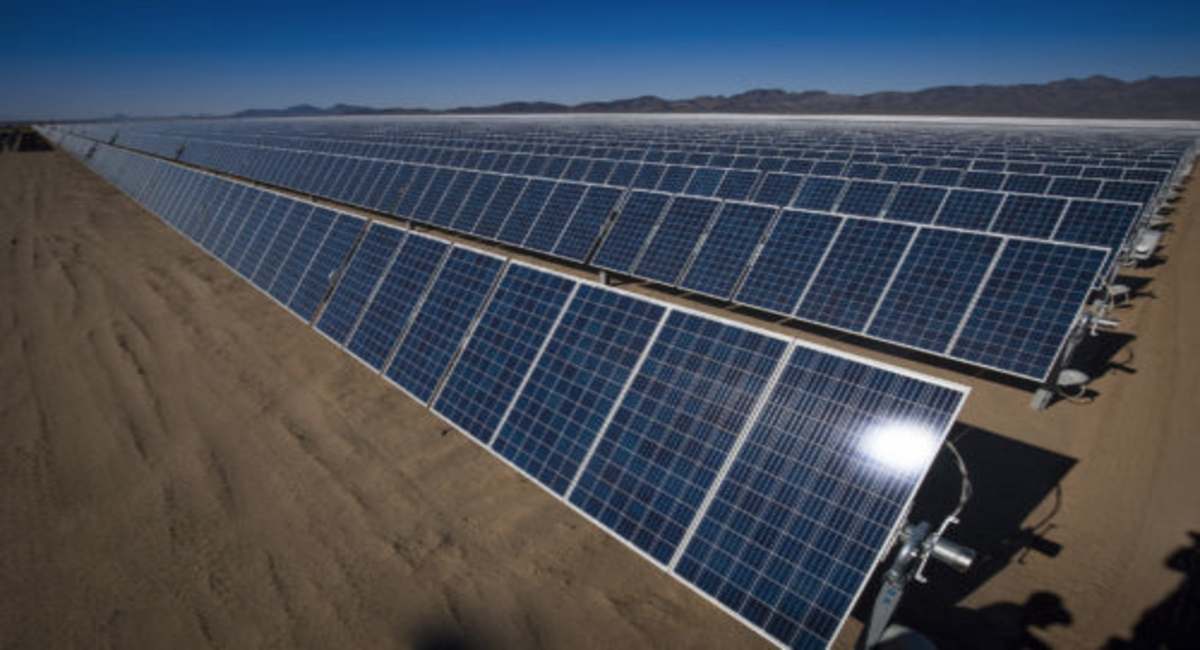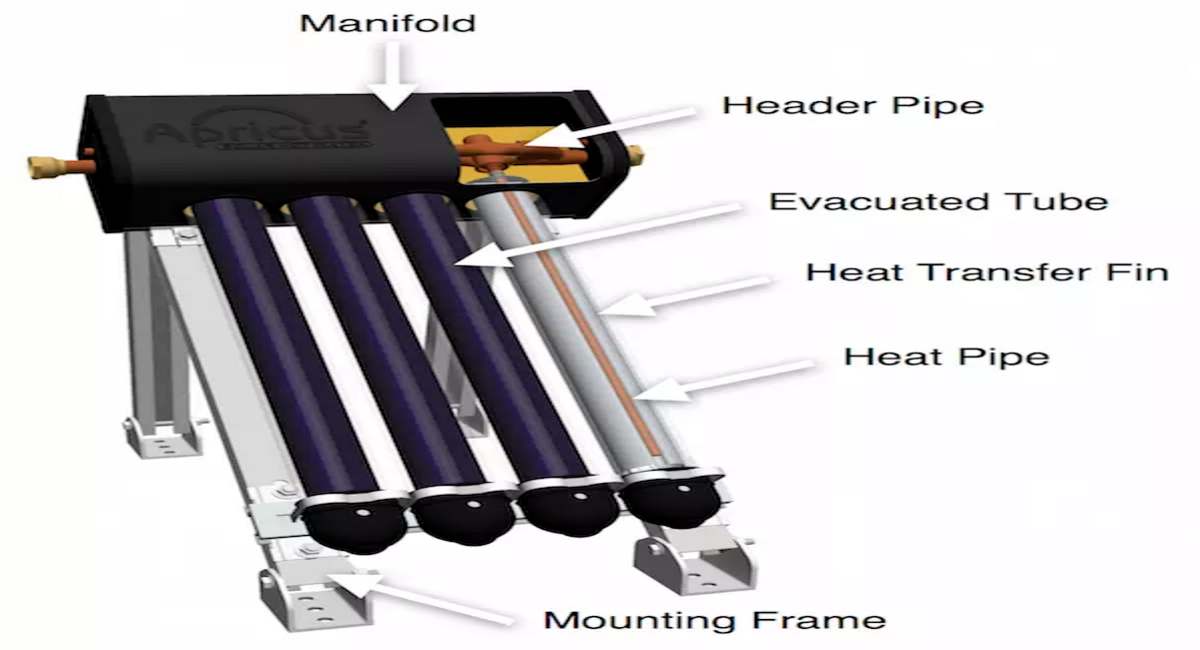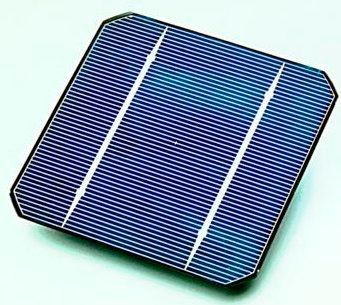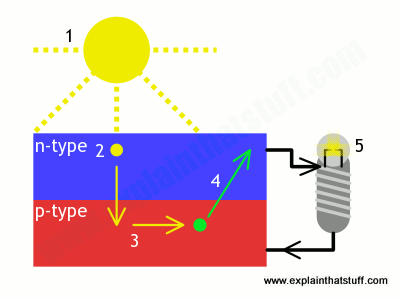A Clean Way to Power the Future: An Introduction to Solar Energy

Introduction to Energy Sources and Solar Power
Human beings have always depended on different sources of energy to survive. We have been using firewood to keep ourselves warm, charcoal to cook our food, and petroleum and natural gas for transportation for a long time. Over the years, however, these conventional sources of energy have depleted.
This is because of the ever-growing population and hence, their increased need of energy. This need for energy will not decrease in the coming time. Therefore, the future depends on the sources of energy that replenish much quicker than conventional energy sources and are sustainable. These are called Renewable Energy Sources. Some of the renewable energy sources include wind power, solar power, tidal energy and energy from biomass.
Solar energy or energy from the sun is one of the largest sources of renewable energy on earth. This is because of the abundant heat and light available from the sun. This heat and light from the sun is harnessed using different technologies to be used in different applications.
Some technologies used in harnessing the sun’s energy are photovoltaics, solar thermal energy, and solar heating. The way these technologies harness the sun’s energy will be explained later in this article. This article also aims at providing a basic understanding of the other concepts related to solar energy.
Solar Thermal Energy
Solar thermal technologies utilise the Sun’s energy for water heating, space heating, space cooling and process heat generation. About 60-70% of domestic hot water use in latitudes that are between 40 degrees North and 60 degrees South can be provided by solar heating systems. The most commonly-used types of solar water heaters are evacuated tube collectors and glazed flat plate collectors. These are generally used for domestic use. Unglazed plastic collectors are also very commonly used and are mainly used to heat swimming pools.

Solar thermal energy can be used for space heating as well. For instance, thermal mass materials such as stone, cement etc. can be used in a calculative way for building houses. These materials absorb the sun’s heat during the day and then radiate the stored heat at cooler temperatures of the night to keep the house cool. They are also effective for cooler climates as this trapped heat maintains warmth in the house.
Solar chimneys are also used for ventilation purposes whereby, heating of the chimney shaft creates a low pressure in the shaft. This makes the air from inside the house to flow through the chimney. Solar chimneys can incorporate thermal mass materials and glazing to improve their performance. Solar thermal energy can also be used for cooking, water treatment and electricity generation using Concentrated Solar Power technology. Where these technologies directly use the sun’s energy, there is another application that converts the energy from the sun into electrical energy to make use of it.
Photovoltaics and Energy Conversion
Photovoltaics (PV) refer to the conversion of light into electricity directly using solar cells. Because of their high efficiency, sustainability and abundance, and low prices, PV applications have become extremely popular over time. After hydro and wind powers, PV is the third largest renewable source of energy in terms of global capacity. A forecast by the International Energy Agency expects a growth of 700 to 880 GW in global capacity of PV-generated power from 2019 to 2024. This could mean that by mid-2020s, PV becomes the renewable energy source with the largest installed capacity. Efforts from researchers are being put in to develop more efficient PV technologies. But how do PV devices function? Photovoltaic application takes place using devices called solar cells. The following image shows a solar PV cell:

Solar PV cells are made up of semiconductor materials such as Silicon. Semiconductor materials are either n-type of p-type where ‘n’ and ‘p’ stand for negative and positive respectively. A solar cell is basically a sandwich of n-type and p-type semiconductor materials. In the following image, a solar cell is connected to a light bulb:

Sunlight is a form of radiation. The energy in sunlight is in small packets called photons. When sunlight gets incident on a solar cell, the photons enter the top layer i.e. the n-type semiconductor. They then pass down to the p-type along with their energy.
The photons transfer their energy to the electrons in the p-type semiconductor. The excited electrons use the energy received from the photons to jump the barrier between the n-type and p-type layers, and finally enter the circuit.
This causes a flow of charge in the cell. This flow makes the light bulb lit. This flow of charge is direct current (D.C.) produced by the solar cell. This current can either be used to power appliances directly or can be stored in a battery.
PV Modules and Arrays
Usually a single solar cell can only generate a very small amount of power. Hence, multiple solar cells are connected together either in series or parallel connections to form solar modules or solar panels. According to
The Eco Experts UK, the average output of a solar module is 256 W. This can be used for lighting individual systems such as traffic signals, street lamps, and other appliances with low power requirement.
For powering residential or commercial buildings, a system of connected PV modules is used. For powering a big area using solar technology, a PV array is laid out with many solar modules connected together depending on the requirement. PV arrays are usually used in deserts and villages for electrification programmes.
The Advantages and Disadvantages to Using Solar Energy
There are many advantages to using solar energy. It is very obviously a renewable energy source as the energy from the sun does not perish and is available in abundance. It is also a clean source of energy as it does not have any harmful effects on the environment such as carbon emissions and pollution.
This property of solar energy gives it a promotional quality and hence, many governments around the world are promoting solar power. There are subsidies that governments are providing, making installation of solar energy systems much more affordable. PV technology, in the form of solar cells, directly converts the sunlight that becomes incident with the cells into electricity.
This happens without any noise, pollution or moving parts. This makes them robust, reliable and long lasting. Incorporating solar power also reduces the electricity bills. Solar power systems also have low maintenance costs.
Solar power also has diverse applications as we have seen above. The research in the area of photovoltaics is also helping in the development of more and more efficient PV devices and hence, it can be said that solar energy is the energy of the future. However, there are some disadvantages of solar power.
The initial costs of installation are usually quite high. This makes it usually difficult to convince people to switch to solar, even with government subsidies. Another disadvantage is that the electricity generation by solar panels is weather-dependant. Storage of the energy generated by solar panels can be quite expensive. And finally, solar panels require a lot of space: the more the power that needs to be generated is, the more the space for panels required is.
Conclusion
Solar energy has recently gained popularity because of its abundant availability. While there are various technologies where the heat from the sun can collected to be utilised in water heating, space heating and cooling, ventilation, cooking etc., the sun’s energy can also be converted into electrical energy.
This is done using photovoltaic technology, a technology that explains the conversion of light energy directly into electricity. Photovoltaic applications occur through solar cells, which are made up of semiconductor materials.
When light becomes incident on these solar cells, the energy from the light in packets called photons gives way for electron-flow in the cell. This is how electricity is generated in PV cells. PV cells are connected together to form modules or panels. For greater energy requirement, modules are connected together to form arrays and solar systems which can power a large area of houses.
There are many advantages of using solar power such as it being a clean source of energy, its sustainability and abundance, its durability, and low maintenance costs.
There are also some disadvantages of solar power. For instance, the initial installation cost is quite expensive. Also, even though there are no emissions from using solar power, the production and transportation of PV modules involve carbon emissions.
These can, however, be argued to be less than that of using conventional sources of energy. Therefore, it can be said that solar power is a clean and renewable energy source. More and more research is being done to make solar energy more efficient and thus, it can be said that it is a reliable source of energy that can power our future.

